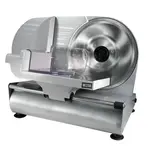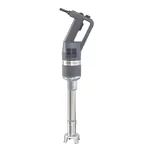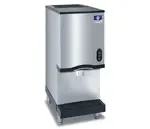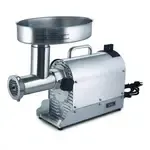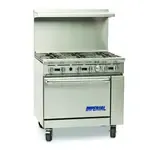
How to Write a Restaurant Business Plan
- Why is a Restaurant Business Plan Important?
- How to Start a Restaurant Business Plan: Step-By-Step Guide
- Executive Summary of a Restaurant
- Market Analysis for Your Restaurant Business Plan
- Restaurant Management Team
- Restaurant Menu Plan
- Operational Plan for Restaurant
- Marketing and Sales Plan for Restaurants
- Restaurant Financials
- To Wrap Up!
- Restaurant Business Plan Examples & Templates
Starting a restaurant business can be a fleeting whim for some, an idea pursued only by those who dare to dream. If you’re reading this, chances are you’ve already made the decision to open a restaurant on your own. While it may be challenging, it’s not impossible, and your vision can become a reality with hard work and determination, one order at a time.
Unless Gordon Ramsay is your business partner, Salt Bae is responsible for your social media marketing, and Wolfgang Puck is helping you with daily operations, you need a business plan. Planning is everything when it comes to starting a restaurant business.
A well-thought-out business plan is key for a successful restaurant. We have gathered valuable information that addresses every element a potential restaurateur may need.
Why is a Restaurant Business Plan Important?
Imagine if your restaurant business had the potential to become a national chain. Maybe it’s destined to be the next Domino’s or KFC. Therefore, a business plan can’t be overlooked. Think of it as the foundation that supports the entire structure of the establishment. Just like a blueprint, a well-crafted business plan maps out the restaurant’s overall strategy, processes, objectives, starting point, and final target.
A restaurant business plan enables identifying the appropriate target market and location for the restaurant, considering factors such as demographics, competition, and customer preferences.
One of the key aspects of a restaurant business plan is the financial plan. It helps to devise a comprehensive financial strategy that includes projected sales, expenses, and profits. This enables owners to make informed decisions about their restaurant’s pricing, budgeting, and investment needs.
Furthermore, a restaurant business plan serves as a tool for attracting potential investors, partners, or lenders. It comprehensively overviews the restaurant’s concept, competitive advantage, market analysis, management team, and financial projections.
The following guide will provide explicit instructions in easy and practical steps to dominate the restaurant scene.
How to Start a Restaurant Business Plan: Step-By-Step Guide

Below is a full strategy that thoroughly covers the outline of a restaurant business plan, starting with an executive summary and then a market analysis, how to pick the management team, forming a sample menu, factors of business operation and sales strategies, and lastly, the financial aspects.
Find out more on how to write a restaurant business plan step by step.
Executive Summary of a Restaurant
It is a synopsis of the project proposal submitted to prospective investors, encompassing concise yet comprehensive components such as the restaurant’s concept, target customers, location, financial status, and marketing strategies. The main purpose of the executive summary is to persuade potential investors or stakeholders to consider the restaurant’s business plan seriously.
Mission Statement
A mission statement should voice the restaurant’s identity and demonstrate the values and vision of the owner. In the context of a restaurant, a mission statement may include the type of cuisine or dining experience offered, the restaurant’s target market, or its customer base.
Mission Statement Example
Subway’s mission statement is to make fresh, delicious, and nutritious sandwiches that are made-to-order, and to provide exceptional service that exceeds our customers’ expectations.
Business Model
The business model outlines the restaurant’s approach to generating revenue and becoming profitable. It briefly covers revenue streams, pricing strategy, target market, competitive advantage, marketing, and sales strategy.
Additionally, a business model also demonstrates the operational structure of the restaurant, including staffing, inventory management, and procurement. It may outline the restaurant’s unique selling proposition (USP) and competitive advantage, which sets it apart from other restaurants in the market.
Business Model Example
McDonald’s generates revenue through sales of food and beverages, franchising, and employing value-based pricing. They target a wide range of customers with a globally recognized brand and utilize marketing and sales strategies, operational excellence, and technological innovations.
Financial Plans
A financial plan is a comprehensive report that includes a restaurant’s current net worth and initial costs. It should cover license fees, property value, utilities, restaurant equipment costs, advertising and marketing budget, and how the business owner plans to allocate financial resources to achieve their goals.
Future Plans
It outlines how the owner envisions fulfilling their vision, including plans for the development of the restaurant, potential expansion into multiple branches, and long-term goals such as offering different types of cuisine. It also includes potential methods for promoting the business and achieving sustained success.
Market Analysis for Your Restaurant Business Plan
The market analysis section in a restaurant business plan highlights the target market, location considerations, industry trends, competitor analysis, and customer preferences.

Target Market
In this section, owners will determine the targeted demography and address the restaurant’s appeal in detail. For example, if the targeted market is the younger generation or millennials, the restaurant can be designed to include vegan options and cruelty-free food. On the other hand, if the restaurant is family-friendly, it can address how it may include a kid zone area to enhance the dining experience for parents.
Target market Example
The target market for Starbucks includes coffee lovers, professionals, students, and individuals seeking a cozy place to work, study, or socialize.
Location
An important part of the market analysis is the planned location. Ensure to mention the land size and how it would be occupied. Remember to align the location with the targeted demography, and seek professional help on how to choose the location for a restaurant to locate a prime spot that meets the restaurant’s needs and objectives.
Industry Trends
In the modern world, keeping up with trends is crucial for any business to survive, especially when it comes to customers seeking personal convenience. Including a brief overview of industry trends is essential in the market analysis as it demonstrates the owner’s diligence in staying up-to-date and monitoring what’s hot and what’s not
Industry Trends Examples
- Plant-based and sustainable dining
- Customization and personalization
- Delivery and takeout services
- Themed restaurants and unique dining experiences
Customer Preferences
Customer preferences are the expectations customers anticipate from restaurants based on what they like and dislike. Think of it as the motive that drives a customer to dine or require the services provided by the said establishment.
Competitive Analysis
Researching the competition unlocks the recipe for restaurant success. It’s beneficial for business growth, highlighting the area’s customer base and containing information about preferences. Also, inquiring about prices, menus, and restaurant design will provide insight into how to stand out from competitors’ styles.
Restaurant Management Team
A well-structured restaurant management team is essential in overseeing operations, ensuring quality service, and achieving the restaurant’s goals. A restaurant business plan must include some details about the management team.

Staffing Plan
The staffing plan involves assessing the size of the restaurant by a human resources specialist to determine the required number of staff and team members. It should also consider the skills of employees and how to select the right person for the right job.
Training Plan
Every restaurant should have a comprehensive training plan aligning with regulations and ensuring quality service. A good training plan prepares employees for their responsibilities, including taking orders, describing dishes, and serving food properly. It should also cover safety measures and facility care and be regularly updated and rehearsed.
Organizational Structure
The typical organizational structure of a restaurant may include roles such as owner, bookkeeper, general manager, kitchen manager, assistant manager, server, host, and others. However, it may vary depending on the type of restaurant. The organizational structure should outline the roles of staff and assign tasks to certain members based on their skill sets and qualifications.
Recruitment and Retention Plan
As the name suggests, a recruitment and retention plan describes how restaurant owners plan to provide a secure work environment with a competitive compensation package. It also highlights how candidates would be selected, aligning with the restaurant’s vision.
Expert advice
It’s important to review and tailor the staffing, training, organizational structure, and recruitment/retention plans according to the specific requirements of each restaurant, as these plans can vary depending on factors such as restaurant size, type, location, and business goals.
Restaurant Menu Plan
Sample menus are an integral part of a restaurant business plan as they provide a glimpse into the culinary offerings and overall dining experience the restaurant aims to offer.

Menu Pricing
A successful menu strategy plays a significant role in the restaurant’s success. For the menu pricing, calculate the initial dish preparation cost and add that to the overhead expenses. Remember that menu pricing should reflect the quality of the ingredients but also compete with other restaurants.
Menu Layout
A restaurant’s business plan should include a demonstration menu layout. Investors and stakeholders, particularly those with experience in the food industry and restaurant business, may express interest in reviewing it.
When designing the menu layout, consider how customers can navigate between categories. Using good-quality images and colors that match the restaurant’s aesthetic is important, and remember that the color palette and design impact the customer’s appetite.
Service
It typically includes information about additional services or items for customers to enhance their dining experience. For example, wine or beverage pairing suggestions, private dining, or event hosting.
Seasonality
The menu should be updated regularly to incorporate seasonal ingredients. A menu could feature a dish that concentrates on a specific seasonal flavor, such as pumpkins. Restaurants can use a seasonal dish to create a marketing campaign.
Operational Plan for Restaurant
Probably, it’s one of the most crucial aspects of a business plan as it outlines how the owner plans to manage the business’s day-to-day operations. The business operations section typically includes information on operating hours, staffing processes, kitchen and front-of-house operations, technology, and regulatory compliance. While these topics may seem complex, we will elaborate on each in the following paragraphs to clarify.
Operating Hours
When determining a restaurant’s operating hours, several factors must be considered. Firstly, consider the selected dishes and their preparation times. Additionally, assess whether the hours align with the availability of the staff and the demographics of the restaurant’s target audience.
Staffing
Hiring staff members may seem tricky, but it should be fairly easy. First, write a full job description and determine each staff member’s responsibilities. Secondly, conduct a personal interview and see if the employee’s skills and morals align with the restaurant’s values. Consider the turnover rate and contact references. Hiring is just part of the process, taxes, rules, laws and more are important to consider as well.
Kitchen Operations
It should cover every aspect of kitchen duties, including determining food quality and handling, restaurant hygiene and cleaning methods, and practicing customer service. One of the most important factors of kitchen management is ensuring restaurant regulations and operating procedures.
Front-of-House Operations
Good front-of-house operations can make or break a restaurant. These operations include understanding how staff should interact with customers, developing strategies for handling customer complaints and feedback and implementing processes to ensure the highest levels of sanitation and safety.
Technology
Technology can help improve restaurant efficiency, increase customer engagement, reduce costs, and better manage data. Restaurants can now streamline processes such as order management and inventory tracking. Moreover, they can use technology to create engaging customer experiences, from personalized promotions to loyalty programs that drive sales growth.
Regulatory Compliance
From food safety regulations to health codes, restaurants must meet various legal requirements to stay in business. Hence, restaurant owners must proactively understand current laws and regularly update their policies as changes occur. They must also have a system that ensures they are always compliant with these rules by providing clear guidelines for employees, vendors, and other stakeholders.
Marketing and Sales Plan for Restaurants
You can serve the best food in the world, but that alone won’t take you far unless you have a well-crafted marketing strategy in place.
Advertising
Advertising is a powerful tool to help restaurants reach new and potential customers. Whether through traditional methods such as print media or digital channels like social media and search engine ads, advertising can potentially increase the visibility of their business and target specific audiences.
Social Media
From introducing new dishes and promotions to engaging with customers, restaurants can use social media to reach more people and promote their business. They can also interact directly with customers by posting interesting content such as photos and videos, responding to comments and reviews, and providing timely updates about changes in their menu or services. In today’s competitive world, creative marketing ideas are important for restaurants to succeed.
Promotions and Discounts
Promotions and discounts are effective for restaurants to reach a wider audience through digital marketing channels like social media, email, and SMS and attract customers looking for a deal. This strategy can boost sales during slow times or bring in new customers.
Host Events
Events allow restaurants to showcase their food, drinks, atmosphere, and team, offering an engaging platform for customers to form memorable relationships and make new connections that can drive sales.
Restaurant Financials
Planning a restaurant business without proper financial plans is like balancing a stack of pancakes while juggling flaming spatulas! Spend some time reviewing all the financial details and listing them in the business plan for future reference.

Revenue Projections
Revenue projections help operators to understand their past and current performance, assess the competition, and anticipate future sales. When done correctly, a restaurant can use revenue projections to ensure they are on track for success in the coming year. Restaurant owners need to dig into food inventory data to create correct revenue projections.
Operating Expenses
Operating expenses are vital in calculating a restaurant’s financial health, including ingredients, payroll, rent, utilities, insurance, etc. By analyzing these costs regularly, owners can gain insight into areas where they may be spending too much or where cost-cutting measures could be implemented to improve profitability.
Startup Costs
Startup costs typically include rent, insurance, licenses, equipment and supplies, professional fees for consultants and accountants, marketing and taxes, and operational costs such as labor, food, and utilities.
Cash Flow Statement
Cash flow statements provide insight into the financial health of a restaurant. Using these statements, restaurant owners determine when and how much cash flow they have coming in and going out of the business and anticipate any potential cash shortages. As a result, managers can be better prepared for unexpected expenses and ensure they have enough money to pay for any costs that may arise.
Profit and Loss Statement
Profit and loss statements are essential for restaurant owners, managers, and other stakeholders, as they provide crucial insights into the profitability of a business. With a total profit and loss statement, restaurant owners can make sound decisions about their operations, such as minimizing costs, increasing revenue, or investing in marketing initiatives to increase sales.
To Wrap Up!
A solid business plan is essential to building a successful restaurant venture. From defining the document’s purpose to outlining key financials, this roadmap will guide owners toward launching and running a thriving restaurant business. So, roll up your sleeves, keep pushing forward, and let your passion for food and hospitality drive you toward success.
Restaurant Business Plan Examples & Templates
- How to Write a Restaurant Business Plan (With Samples)
- Restaurant Business Plan Examples
- How to Write a Restaurant Business Plan [with Sample]
- Sample Restaurant Business Plans For a New Business Owner
- Restaurant Business Plan
- How to Write a Restaurant Business Plan
- Restaurant Business Plan
- Restaurant Business Plan Template
- Restaurant Business Plan Template [Updated 2023]
- How to Write a Restaurant Business Plan [Sample Template]
- Restaurant Business Plan Examples [ Startup, Fast Food, Opening ]

